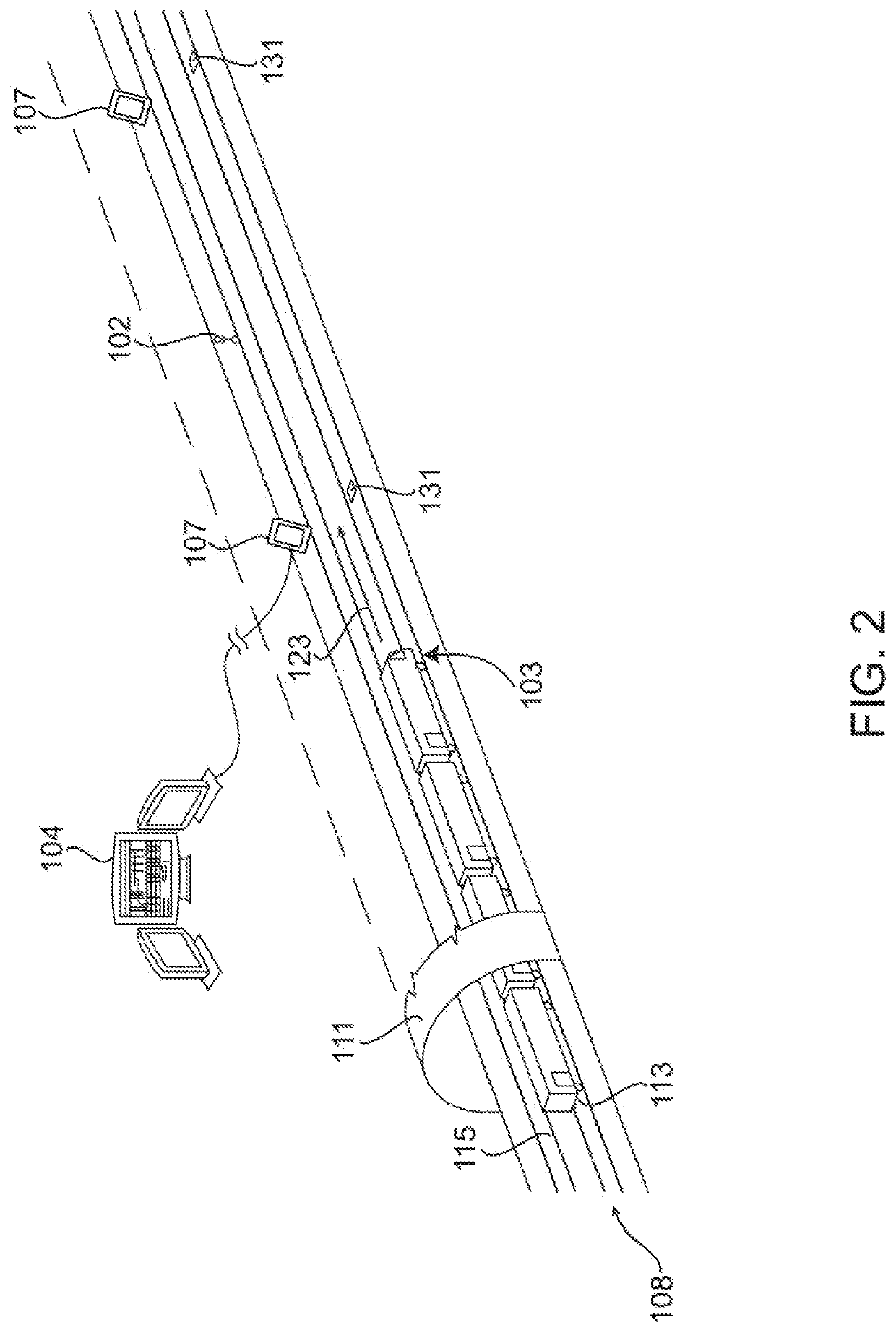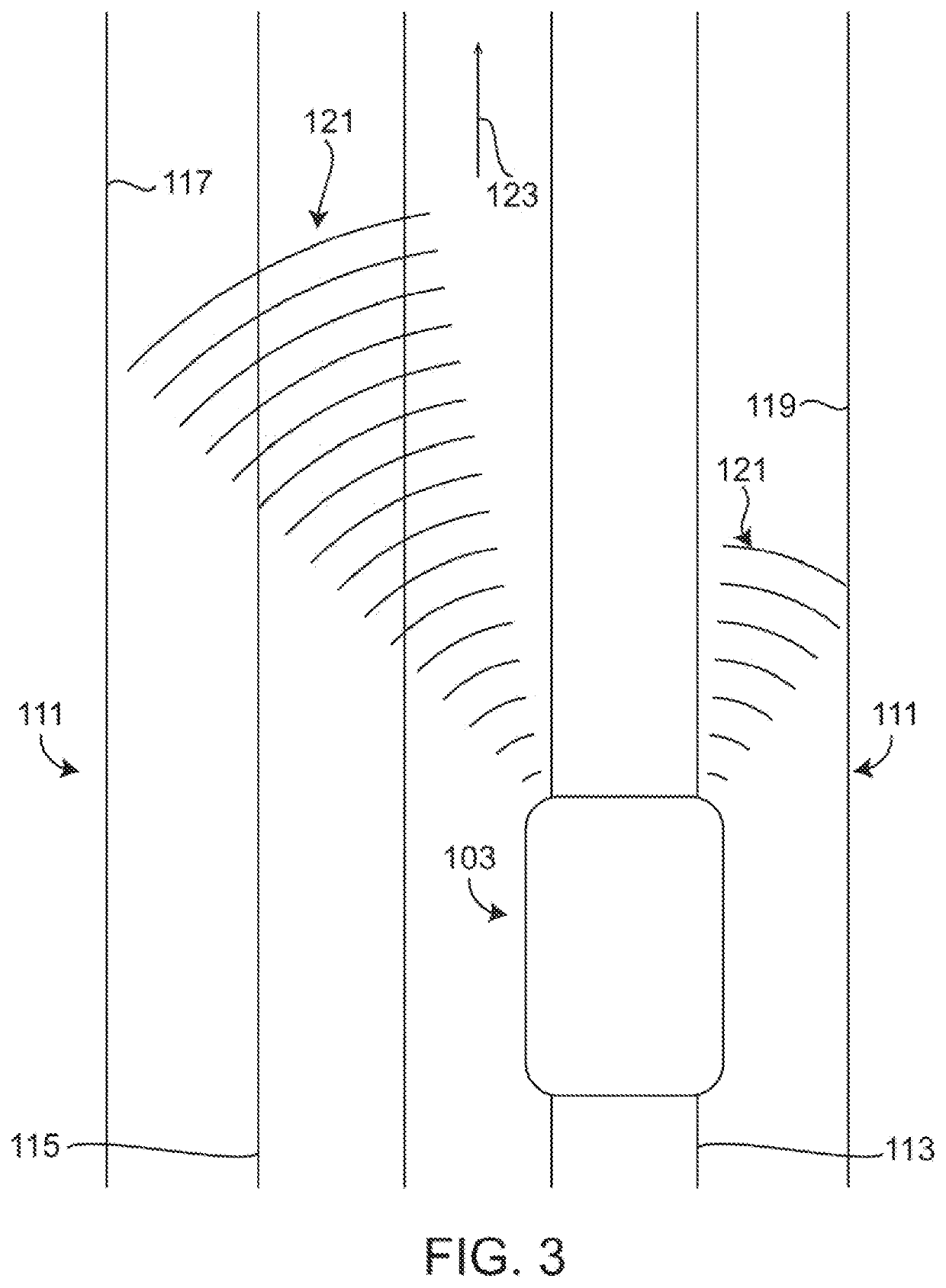As the number of transit routes and
light rail lines throughout metropolitan areas increases, so does the potential for transit, worker, and
pedestrian accidents.
Despite improvements in track signals, train controls, and railroad communication technology, the incidence of fatal train collisions has dramatically increased in recent years.
Generally, rail, road, and transit maintenance workers are often the most vulnerable for
pedestrian accidents on transit routes.
Thus, their location alone puts them at a higher risk margin for vehicular accidents.
In addition, much of the work that rail, transit, and road maintenance workers are engaged in is noisy, high
decibel work involving heavy machinery (e.g., jack hammers, sledge hammers, nail guns, blow torches, etc.).
The
noise associated with this work can make it difficult if not impossible for individuals working on a track,
route, or road to hear a train,
light rail, or other vehicle coming their way before it is too late.
While the operators of the trains, rails, vehicles, and transit routes are often aware of construction zones on the tracks, routes, and roads, workers, in the normal course of their work, can often stray from these zones to other areas-areas where transit operators are not prepared to encounter workers.
Further, while workers are often made aware of the vehicle and transit schedule and, by extension, when to expect transit vehicles in areas of construction, transit vehicles can often be ahead of or behind schedule, thus
confounding this safety variable.
In addition, many workers just simply lose track of time while they are on the job.
However, prior art systems have limitations.
For example, it may be difficult for transit maintenance workers and vehicles to receive
satellite positioning system data when located in a tunnel, under a bridge / structure, or even amongst buildings or trees.
Under such conditions, if no
satellite signals are received,
satellite positioning system data cannot be used to assist in determining the locations of transit maintenance workers and vehicles.
In such cases where
satellite positioning system data is unavailable or insufficient, worker safety systems must rely on other sources of information to determine the locations of workers and vehicles within the
transit system.
While these typically do not require satellite access, they also present problems.
This makes them quite expensive and can often result in construction activity being necessary to install them (replete with its own risks).
Thus, they also often have to be placed at a fairly significant distance from the worksite to be useable.
For these types of reasons, on-board vehicle systems are often preferred, but those systems can have satellite communication issues as discussed above.
Further, satellite positioning systems may have additional limitations.
For example, satellite positioning systems generally have difficulty in determining where a transit vehicle or worker is located when multiple roadways or rails are stacked vertically on top of each other or in close proximity to each other horizontally.
Accordingly, in the case of one rail or roadway passing over another, satellite positioning systems generally cannot determine which rail or roadway is occupied by a given vehicle or worker when the vehicle or worker is positioned at the location of the overlap.
Further, as anyone who has used a
satellite navigation system will know, the systems often have difficulty determining a user's position on two pathways which are right next to each other horizontally as the error in locating the vehicle may be greater than the size of the path.
However, such predictions are indirect, at best, and do not precisely determine where any workers or vehicles are within the
transit system.
However, track sensors are expensive, require costly placement and maintenance, may be subject to damage during use, and provide limited information.
Further, track sensors require time and effort to be placed and only provide information about vehicles at the location where they are placed.
Without good location information for oncoming vehicles, systems may warn a worker who is in the proximity of a moving vehicle that such a vehicle is around.
The worker, however, may not know when or even if the vehicle will be present in the worker's location, how fast the vehicle is approaching, or how far away the vehicle is currently.
This lack of information may lead to additional problems, such as worker
panic when a warning
signal is received even if there is no legitimate cause for such level of alarm.
Additional problems include worker
downtime because the worker may be required to leave the warning area as soon as is possible when they do not know how soon, or if, the vehicle will be at their location.
Said another way, most prior art systems essentially maximize worker
downtime because the prior art system's warnings are relatively indiscriminate.
An additional issue is that many prior art safety systems suffer from other problems including worker warning fatigue.
Worker warning fatigue generally occurs when workers are frequently warned about potential hazards while performing their work.
This fatigue also may occur when all warnings given are at a single warning level without any progression in the level of the warning as the
risk level increases.
Similarly, worker warning fatigue may be particularly sensitive to the use of only high (e.g., loud, fast, strong, annoying, or otherwise intense) warning levels.
While the reasons why workers may become fatigued due to increased warning activity may not be fully understood, the unfortunate result of worker warning fatigue is that workers may become less reactive to safety system warnings or even ignore such warnings if more are provided.
Some reasons for the development of worker warning fatigue may be the
perception that the warnings are (a) annoying; (b) unnecessary; (c) too frequent; (d) too severe; and (e) the cause of wasted time during the work day.
In some cases, workers may disable or reduce the effectiveness of warning devices to which they have access.
For example, a worker may deactivate a personal warning device due to a belief that the device provides warnings too frequently.
Another issue with prior safety systems is that, in some situations, it may be impossible or infeasible to equip all vehicles with
vehicle control units.
For example, some legacy maintenance trains may not be capable of being fitted with modern
vehicle control units.
In either case, prior safety systems may have no means of determining where these special trains are within the prior safety system or what the trains' direction and speed may be at any given time.
This lapse in the prior safety system's control may present serious risks to all those
proximate to the tracks in the train system.
In any case, losing the ability to determine the positions of transit maintenance workers and vehicles in real-time increases the risk of a
pedestrian accident.
 Login to View More
Login to View More  Login to View More
Login to View More 


